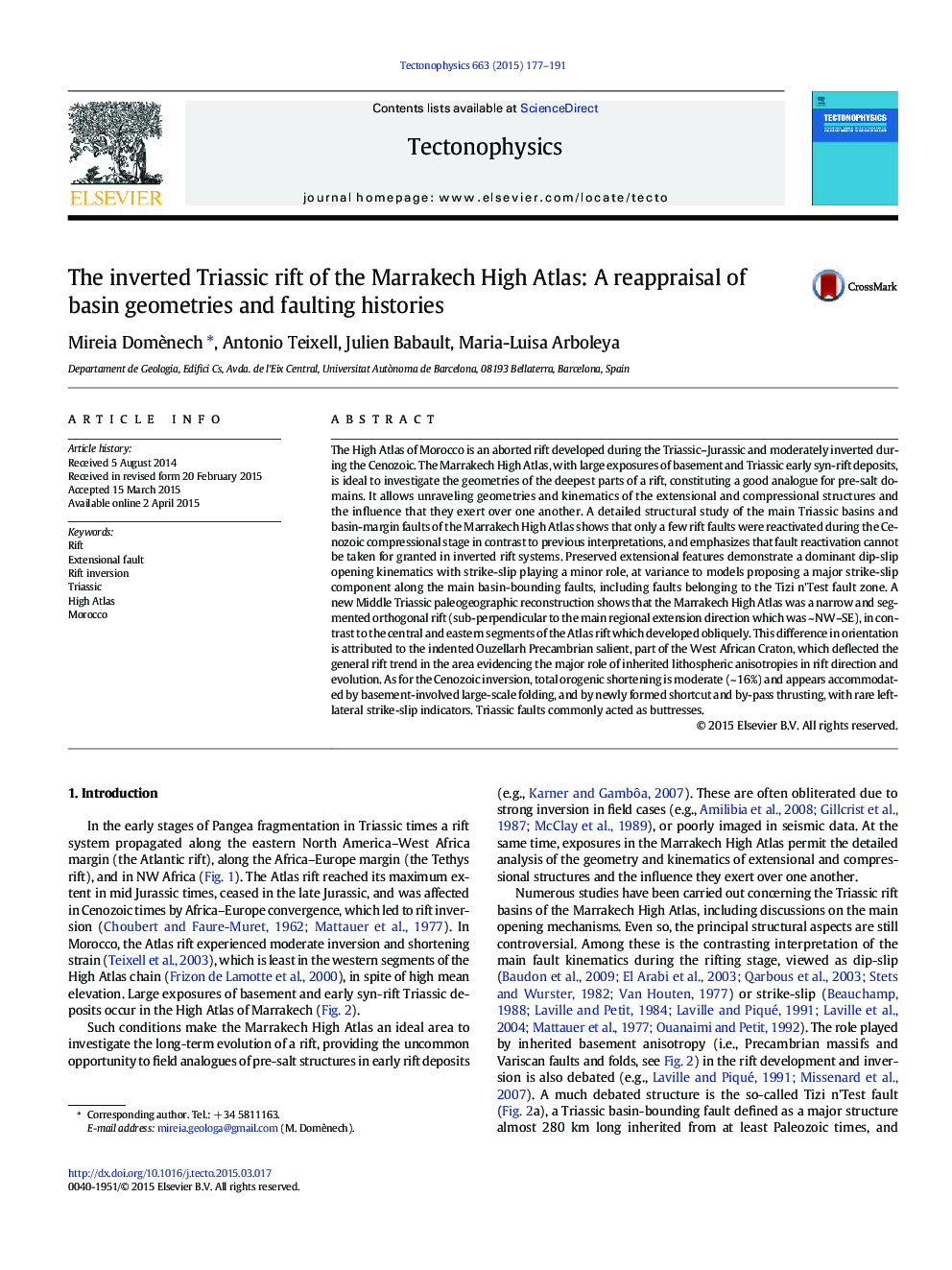| کد مقاله | کد نشریه | سال انتشار | مقاله انگلیسی | نسخه تمام متن |
|---|---|---|---|---|
| 6433525 | 1636732 | 2015 | 15 صفحه PDF | دانلود رایگان |

- Structure of Triassic rift basins of Marrakech High Atlas is described.
- Main rift faults not reactivated during Cenozoic compression
- Shortening accommodated by long-wavelength folding and thrust neoformation
- Minor strike-slip components on main extensional faults and compressional thrusts
- Influence of lithospheric anisotropy in deformation localization is discussed.
The High Atlas of Morocco is an aborted rift developed during the Triassic-Jurassic and moderately inverted during the Cenozoic. The Marrakech High Atlas, with large exposures of basement and Triassic early syn-rift deposits, is ideal to investigate the geometries of the deepest parts of a rift, constituting a good analogue for pre-salt domains. It allows unraveling geometries and kinematics of the extensional and compressional structures and the influence that they exert over one another. A detailed structural study of the main Triassic basins and basin-margin faults of the Marrakech High Atlas shows that only a few rift faults were reactivated during the Cenozoic compressional stage in contrast to previous interpretations, and emphasizes that fault reactivation cannot be taken for granted in inverted rift systems. Preserved extensional features demonstrate a dominant dip-slip opening kinematics with strike-slip playing a minor role, at variance to models proposing a major strike-slip component along the main basin-bounding faults, including faults belonging to the Tizi n'Test fault zone. A new Middle Triassic paleogeographic reconstruction shows that the Marrakech High Atlas was a narrow and segmented orthogonal rift (sub-perpendicular to the main regional extension direction which was ~Â NW-SE), in contrast to the central and eastern segments of the Atlas rift which developed obliquely. This difference in orientation is attributed to the indented Ouzellarh Precambrian salient, part of the West African Craton, which deflected the general rift trend in the area evidencing the major role of inherited lithospheric anisotropies in rift direction and evolution. As for the Cenozoic inversion, total orogenic shortening is moderate (~Â 16%) and appears accommodated by basement-involved large-scale folding, and by newly formed shortcut and by-pass thrusting, with rare left-lateral strike-slip indicators. Triassic faults commonly acted as buttresses.
Journal: Tectonophysics - Volume 663, 16 November 2015, Pages 177-191